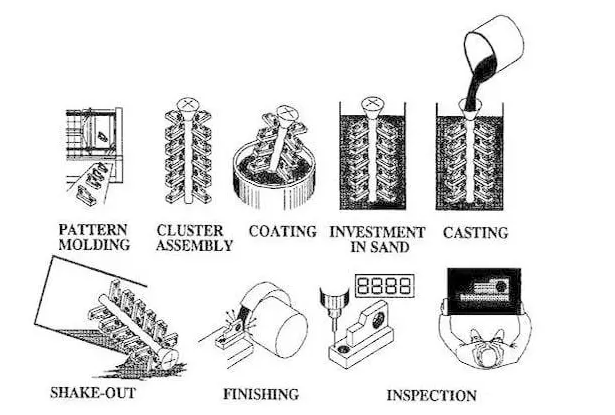
- English
- Español
- Português
- русский
- Français
- 日本語
- Deutsch
- tiếng Việt
- Italiano
- Nederlands
- ภาษาไทย
- Polski
- 한국어
- Svenska
- magyar
- Malay
- বাংলা ভাষার
- Dansk
- Suomi
- हिन्दी
- Pilipino
- Türkçe
- Gaeilge
- العربية
- Indonesia
- Norsk
- تمل
- český
- ελληνικά
- український
- Javanese
- فارسی
- தமிழ்
- తెలుగు
- नेपाली
- Burmese
- български
- ລາວ
- Latine
- Қазақша
- Euskal
- Azərbaycan
- Slovenský jazyk
- Македонски
- Lietuvos
- Eesti Keel
- Română
- Slovenski
- मराठी
- Srpski језик
Why are lost foam castings not cost effective?
2024-07-04
In fact, Lost Foam Casting is in many cases one of the more cost-effective casting methods, rather than uncost-effective. Here are some reasons why lost foam casting can be considered more cost-effective:
Near-Net-Shape:
The lost foam casting process enables castings to achieve a near-net shape, which means that subsequent machining is greatly reduced and in some cases can even be eliminated entirely. This significantly reduces production costs, as machining is one of the most expensive and time-consuming parts of post-casting processing.
Great design freedom:
Lost foam casting is capable of producing complex shapes of castings that may be difficult or impossible to achieve with traditional casting methods. This design freedom allows engineers to create more optimized part designs, reduce material waste, and potentially improve the overall performance of the product.
High material utilization rate:
Because the foam model of lost foam casting is completely consumed during the casting process, there is relatively little material waste. Additionally, because the cast shape is close to its final shape, no additional material is required to fill unnecessary space.
Short production cycle:
Mold manufacturing for lost foam casting is relatively simple and fast, which helps shorten product time to market. In addition, due to the small amount of subsequent machining, the entire production cycle is shortened accordingly.
saving cost:
According to some reports, lost foam casting can reduce manufacturing costs by up to 40%, mainly due to reduced machining, material waste and shorter production cycles.
However, it is also important to note that lost foam casting may face some challenges in certain situations that may affect its cost-effectiveness:
Technical complexity:
The lost foam casting process requires precise control of foam model preparation, coating application and casting conditions. Technical complexity may require higher training costs and production control accuracy.
Material restrictions:
Certain materials may exhibit peculiar behavior during lost foam casting, such as magnesium alloys which have difficulty filling the mold completely due to their endothermic properties. This may require additional process steps or adjustments, thereby increasing costs.
Equipment investment:
Although lost foam casting can reduce costs in some aspects, the initial equipment investment may be relatively high. This includes foam cutting machines, coating equipment, casting furnaces, and more.
In summary, lost foam casting is a cost-effective casting method in most cases. However, the specific cost-effectiveness depends on a variety of factors, including part design, production batch size, material selection and production environment. Therefore, a detailed economic evaluation should be performed before deciding to use lost foam casting.




